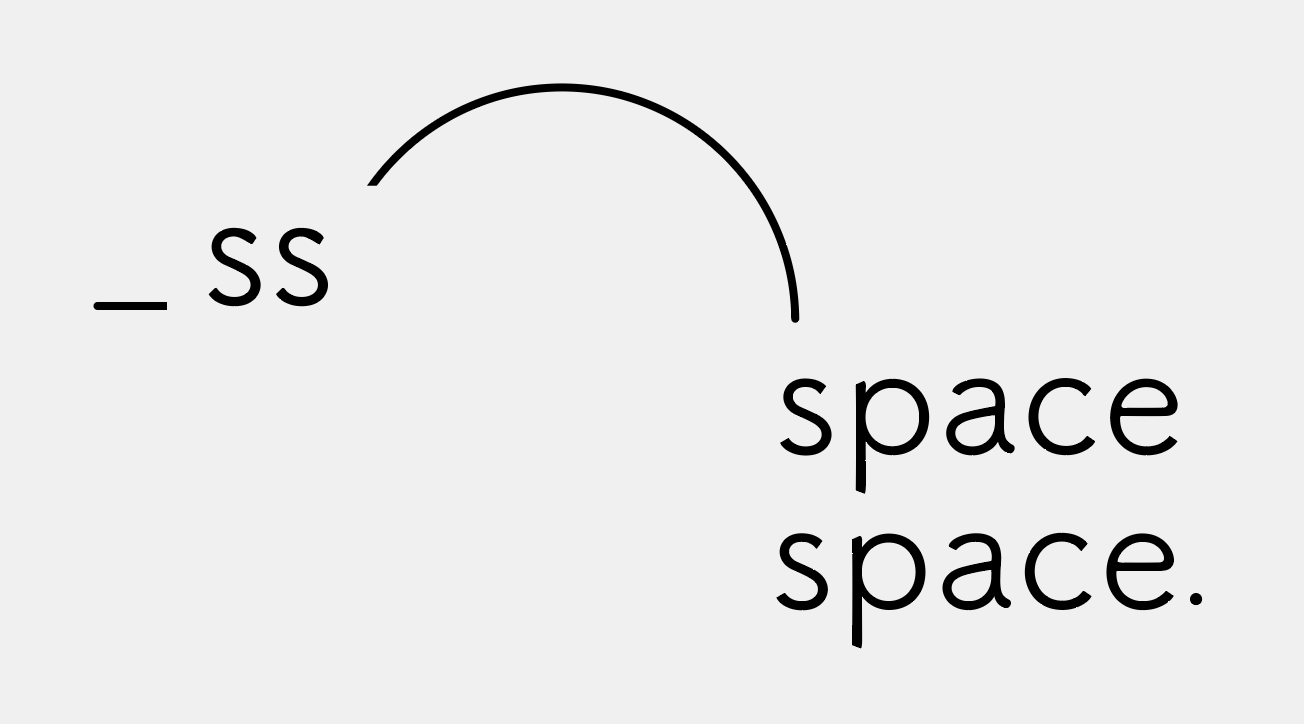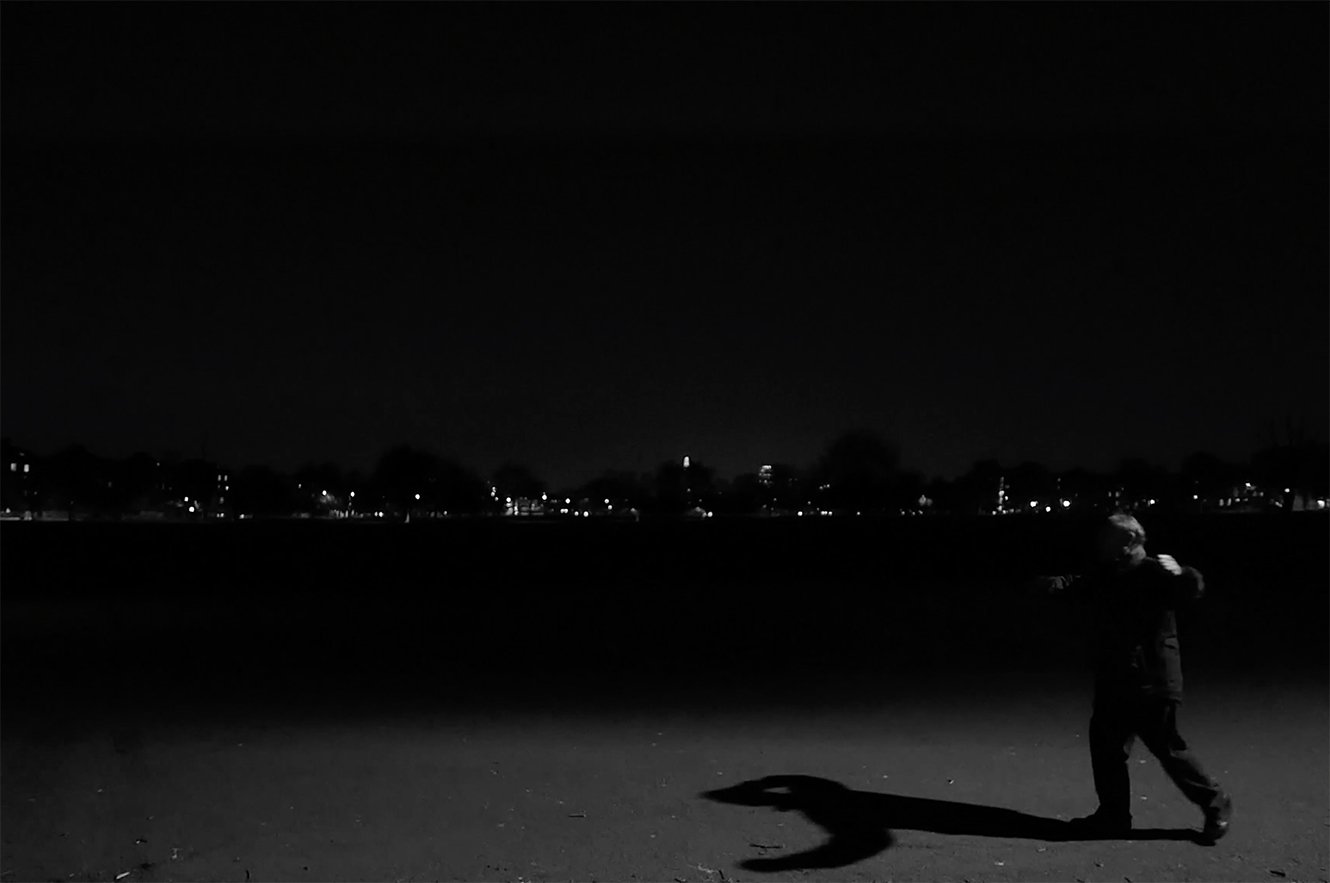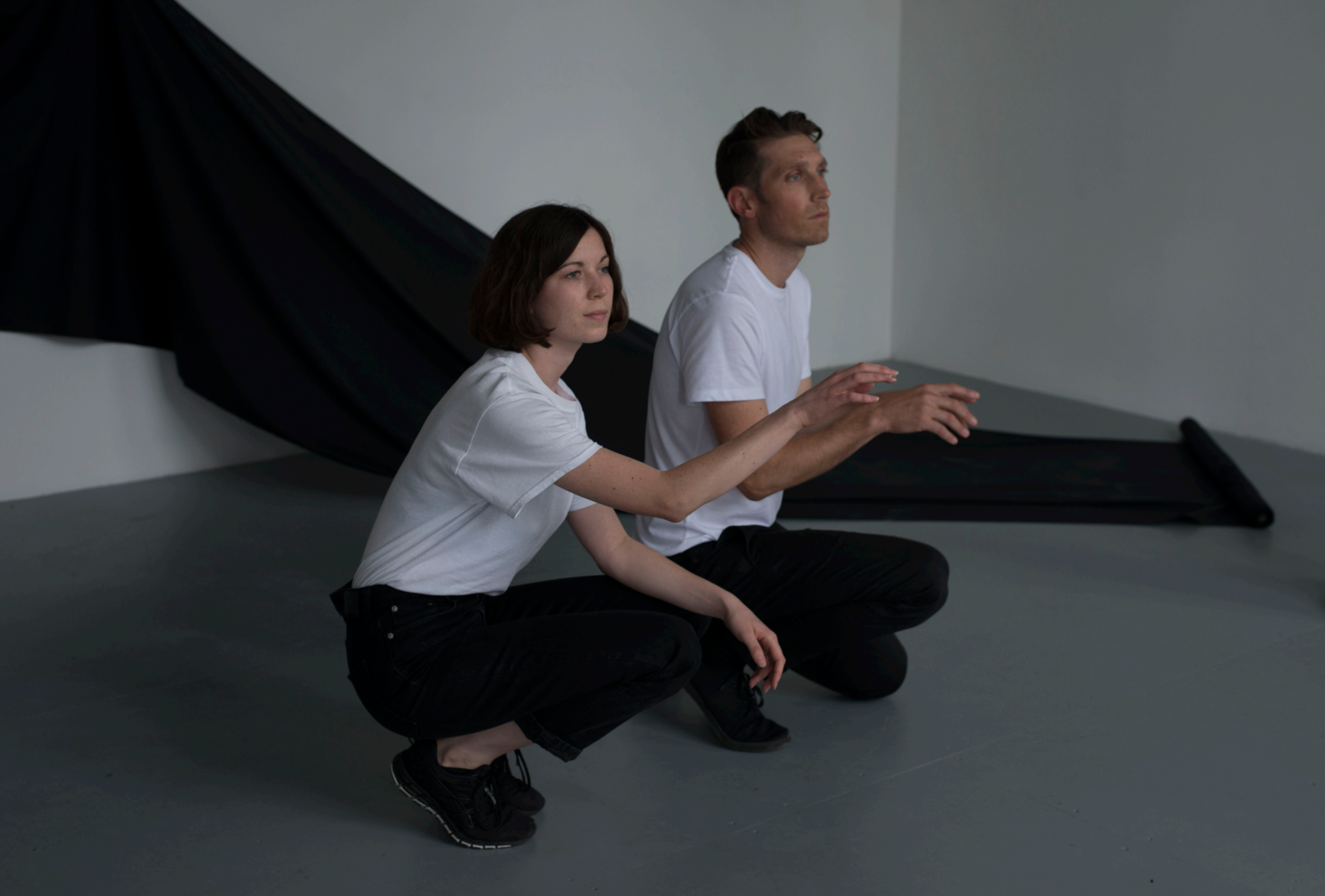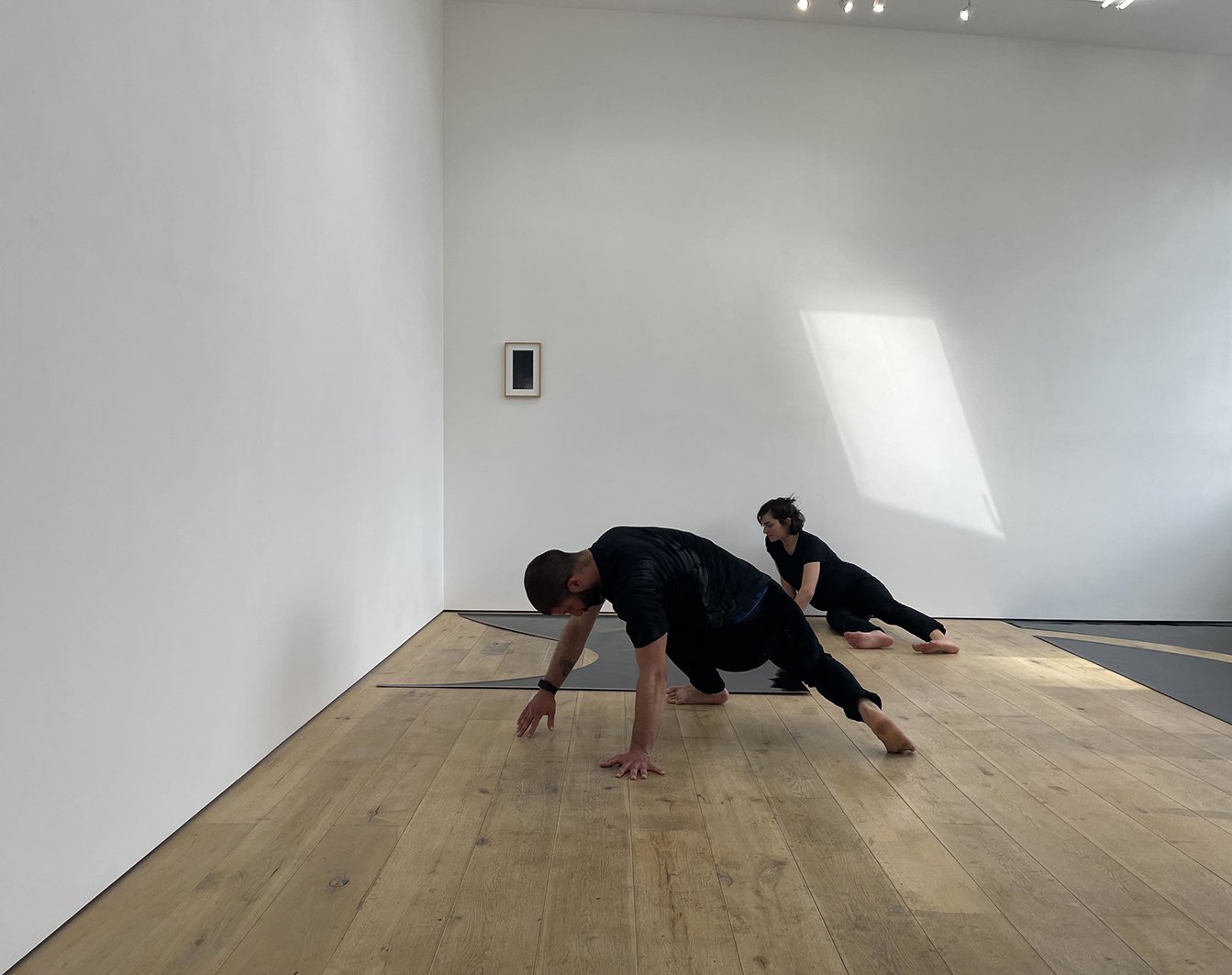
‘I am interested in the space in between. That which exists in between mediums, people, relationships, screens, history and materials.‘
Tom Lovelace
Unknown Times and Untitled Spaces
words by Tom Lovelace
I have been trying to write these words for some time.
For many months I have sat down and attempted to reflect and write, with clarity about the pandemic and the creative arts. And for many months I have struggled. My mind muddled. On each occasion I have seemingly felt overwhelmed by a different emotion. Sometimes this feeling has been sadness, sometimes confusion. Other times I have felt excited and joyful. But then also apprehensive and isolated. I have felt inspired. But confusion returns once again, accompanied by nervousness. The latter has sneaked back into my life, years after I thought I had left it behind.
This at best is a collection of feelings that appears to be eclectic. On the other hand, incoherent and unbalanced. What binds all of this together is that it has unfolded during the Covid-19 global pandemic, when notions of time, established structures and relationships with space have shifted in unprecedented ways.
In theory, I should be a good person to reflect upon the arts and the conundrums we have faced. I can understand how one might consider this to be true. I am an active artist, I teach at universities, curate exhibitions and I mentor younger, emerging artists. I am someone who I believe other artists come to for fragments of guidance and advice. However, my reality is that I have been as confused, tired, and overwhelmed as the reader of these words or the student seeking support. Somehow though, in amongst the whirlwind of recent uncertainty, I have managed to remain creative. I hope the following words will provide insight into the ways in which I have navigated unpredictable times and unfamiliar spaces.
Waiting with Stillness, Waiting with Motion
I waited with patience. I waited with frustration. I waited alone and with others. With stillness and with motion.
Three weeks into the first lockdown and I had become frustrated of waiting within the confounds of my London home. Three weeks had felt like three months of waiting. Waiting for further restrictions, waiting for exhibition cancellations, waiting for my zoom meeting to start and ultimately waiting for further upsetting news about how Covid-19 was transforming our lives and the spaces we inhabited. In turn, I began to run late at night. As a form of release. I would leave the house once my daughters were in bed and I would run in large, looping circles around a park close to my home in South London. I like to run with the monotony of repetition as this affords me the time to think about ideas and to my practice. If I become too adventurous with my route, then my attention becomes swallowed up by navigating new roads and pathways.
On one of these night runs, I spotted a figure, to my left, in the distance moving under a streetlamp. As I got closer it became clear that it was a man dancing, alone. Arms stretched, holding only thin air. With my eyes fixed on the dancing figure, I decided to run towards him and past to take a closer look. I subsequently looped the park, running past again and watching. I then decided to stop and started talking to him, from a distance. These were the initial days and nights of social distancing. We remained three to four meters apart as I asked him what he was doing. David was his name. He was pensioner from a nearby estate. Dancing and dance classes were his love and his joy. With the lockdown, his classes had halted and so David walked to the park at night to dance. We talked for about ten minutes and then I left him to dance. As I ran away, I looked back and desperately wanted to dance with him, to touch him, to move with him and to hold him.
The following night I felt compelled to return. David was there, in the same spot, practicing the waltz. The weeks that followed were the some of the most exciting and creative times of my practice. I filmed David over a period of four nights and then subsequently responded from afar, in my studio during the corresponding days. The result was a new film work – The Dancer and the Shadow, exploring ideas of remote and close encounters, touch, desire and loneliness. The dancer and the shadow were of equal importance. But perhaps of greater significance was the space in between. The moments and matter between bodies. A space defined by boundaries and of loss, and yet a space for potential and a space for new creativity.
Liminal spaces and stretched bodies
During the summer of 2020 I was developing an exhibition for the Bodø Biennale at NŌUA in Norway. The exhibition, and its initial physical form was cancelled and subsequently became simultaneously flattened and expanded by pandemic restrictions. Instead of boarding a plane and travelling to Bodo to stage an exhibition in one place, one building and in one time zone, the exhibition was metaphorically and literally pulled apart and instead unfolded across multiple spaces. Three key spaces emerged. Bodø, where the public exhibition took place. London, where I staged a counter space and thirdly, the space in-between these locations, which existed through digital technology and lenses and live streaming.
Mirror Mirror took place. My ambitions for the exhibition expanded through a collaborate space in which remote encounters connecting and stretching bodies between Norway and the UK could manifest through live performance, photography and digital technologies.
Webcams were installed within the spaces of NŌUA, allowing myself and collaborators Alexandra Davenport and Clémentine Bedos to respond to the visiting public through movement and gesture in London. These live performances were subsequently streamed back to Bodø in real time and projected onto the gallery walls. Initially, most gallery visitors were unaware of the live, interactive nature of the display. Subsequently, wonderful and intimate collaborations unfolded, from afar. The traditional and predominantly passive relationship between audience and artwork was deliberately broken and entangled, presenting what I hope was a live inquiry into the acts and rhythms of looking, moving and being with uncertain and unpredictable architecture of time and space.
Shallow and Deep depths of Field
Dora, my eldest daughter is watching herself on the screen of a laptop computer. She is in the midst of a home-schooling zoom lesson during the second London lockdown. The sun is shinning. Everyone in the house, including the computer is hot. Dora is looking at a representation of herself through the eyes of the camera. She appears to be transfixed and has slipped off-piste from of the conversation. The lesson, defined by grainy noise and fidgeting bodies abruptly ends. Minutes later the screen goes to sleep and falls into jet black. Dora once again looks at and into the computer, only this time there is nothing there apart from another, altogether different reflection of herself and the empty space of the screen which oscillates between a shallow greasy surface and deep, dark void.
Weeks later, I stage a collaborative exhibition titled Bathers at Sid Motion Gallery in London. The exhibition was inspired by that very afternoon and the ways in which the acts of looking and being had become increasingly complicated by the shallow and deep spaces of the screen.
30 December 2021
Confusion continues to reign, at least in my mind, and I have never felt this nervous or unsure about the future. However, what has emerged and become clear is that making art during unknown times and within untitled spaces creates wonderful potential for new forms of collaboration and offers important branches to grasp during periods of individual and collective free fall.
那些未知的時間和不具名的空間
文|Tom Lovelace
我嘗試寫這篇文章已經有好一段時間了。
這幾個月當中我試圖坐下來反思、著筆以明晰疫情與藝術。這些日子以來,我掙扎了許久——我的腦袋一片混亂。在每一次的沈思中,我彷佛都被不同的情緒淹沒,時而悲戚、時而困惑,有時竟也會感到興奮、愉悅,同時充斥著憂愁與孤獨。然而當靈感泉湧之際,那些我曾以為早已離我遠去的困惑與憂慮,又會再次地向我席捲而來。
這篇文章充其量可以算是個不拘一格、不連貫且不平衡的感受合集。而將這些情感聯繫在一起的便是時間概念、既定結構和空間關係,在新冠肺炎全球疫情之下,以前所未見的方式所開展的變化。
理論上,我認為自己應是一個善於反思藝術與當今我們所面臨的難題的能者,同時我也能理解他人會如此認為。作為一名藝術家,我任教於大學、執行策展,同時指導年輕的新銳藝術家。我也相信自己會是那位在其他藝術家需要建議及指導時會找的那個人。然而事實上,我其實也與那些尋求協助的學生或正在閱讀這篇文章的你一樣感到困惑、疲憊及不知所措。即便如此,我仍以某種方式,嘗試讓自己保有創造力。接下來的文字,我希望能梳理關於在未知的時間及不熟悉的空間中,我如何尋找方向,供讀者參閱。
等待時而動 時而靜
耐心與挫折同我靜待,我獨自守候也與他人等候。靜而動、動而若靜。
那是首次封城的前三週,我在混亂的倫敦家中因等待而變得日漸消沈。三週的等待有如三個月之久:等待進一步的限令、等待展覽取消的消息、等待視訊會議的開始,最後,等待著Covid-19如何改變我們的生活與居住空間而令人混亂不安的消息。我因此開始在深夜跑步以作為一種紓壓的方式。我通常會在女兒們入睡後離開家,前往一個在南倫敦家附近的公園,繞著它大圈大圈地跑。我喜歡跑步時重複的單調,這讓我有時間思考自己的藝術實踐。假設跑步路線過於挑戰,我的注意力便會在探索新的途徑中被吞噬。
在某天深夜跑步時,我瞥見左方遠處的路邊街燈處有一個人影。我愈是靠近,畫面愈加清晰,我緩緩朝他跑去,直到看到一位正在獨自跳舞的男子——其伸展的雙臂好似握住了那稀薄的空氣。我雙眼盯著那個舞動的人影,一面環繞公園,一面在經過時觀察他。隨後,在與他保持社交距離的前提下,我決定停下腳步與他對話。仍記得那是社交距離規範的前幾段日子,我們就這樣隔著三到四公尺的距離,以我詢問他在做什麼而開啟的對話。他的名字叫做David,他是住在附近一位養老金受領者。他說參加跳舞班與舞蹈是他的快樂泉源。礙於封城禁令,他的舞蹈班被迫停課,因此大衛才會在夜幕低垂時步行至公園跳舞。我們聊了近十分鐘,接著我離開、他繼續舞蹈。跑離他的同時,我不斷回頭望,深切地想要與他共舞、隨他擺動,也想觸碰他、擁抱他。
隔夜,我覺得我有必要回去那個公園。David仍在那裡、在同個地點練習華爾滋。接下來的幾週是我藝術創作中最扣人心弦且富饒創意的時期——在那之後的連續四個夜晚,我拍攝David,並在遠處—我的工作室裡回應他。最後,我將拍攝的素材製作成一部新的錄像作品—舞者與陰影(The Dancer and the Shadow),一部關於渴望、觸摸與寂寥,並探索遙遠卻親密的相遇。舞者與陰影是同等重要的,但或許更為重要的是存在這兩者之間的空間——在身體與身體之間存在的時刻及事物。這個空間可以是隨著邊界而流變;或者,它更可以是一個潛在的空間、一個屬於嶄新創造力的空間。
閾限的空間與伸展的身體
在2020年的夏天,我正籌備一場將於挪威NŌUA舉辦的Bodø雙年展。然而因疫情諸多限制,實體展覽被迫取消,藝術家不需搭飛機前往位於Bodø的某棟建築裡、更不需跨越時區展覽。取而代之的是此次雙年展分別在多個不同空間中展開,三個關鍵的展覽空間因而出現:Bodø,也就是這場公開展覽所舉辦的地點、我在倫敦展演的空間,及在這些地點之間的空間,也就是透過數位科技、鏡頭及線上直播而存在的空間。可以說因疫情的限制扁平化且擴張了本次的雙年展。
Mirror Mirror這件作品因此誕生。與空間的合作開展了我對於這個展覽的意圖。在這個空間當中,我透過現場展演、影像與數位科技等方式,在挪威與英國之間,連結並延展身體的遠端相遇。
網路攝影機被安裝在NŌUA的空間中,讓我與合作者Alexandra Davenport和Clémentine Bedos得以在倫敦透過肢體動作與姿態來回應在挪威的觀者,與此同時,我們把表演的即時影像傳送回Bodø,並投影至藝廊的牆壁上。起初,大部分觀者並沒有意識到展出作品具有現場互動的性質。隨後,親密且美好的合作在遠處開展——觀者與藝術作品間被動的關係被有意地打破且相互牽引著彼此,以此呈現出在不確定與無法預測的時空架構中,作品是對於觀看、移動、存在的行為及其韻律的在場質問。
那既薄淺卻深遂的景深
我的大女兒Dora正在觀看透過一臺筆記型電腦的螢幕看她自己。這是倫敦第二次封城的期間,她正透過Zoom在家上學。太陽仍舊耀眼,屋內的每個人,也包括電腦都在發燙。Dora正透過相機的鏡頭觀察自己在螢幕上的影像,她看起來呆若木雞且似乎早已從談話中潛逃。幾分鐘之後,這堂由噪音和坐立不安的身體所定義的課程驟然結束,那片螢幕便陷入一片漆黑。Dora再次看著著那台電腦,只是這一次,視線的另一端沒有其他事物,只有那個因反射而出現的全然不同的自己、一個空蕩蕩的螢幕,以及一個在淺而光滑的表面與深邃黑暗的虛空中搖擺不定的空間。
幾週之後,我在倫敦的Sid Motion Gallery發表了一個合作展覽〈Bathers〉。這個展覽的靈感是來自於那個午後、那樣的觀看行為,以及因螢幕時而薄淺時而深邃而逐漸變為複雜的存在方式。
2021年12月30日
混沌持續困擾著我。至少在我的腦海中,我從未對未來感到如此的緊張或不確定。然而,日漸浮現而清晰的是:在這未知的時間與不具名的空間中持續創作、發展出嶄新的合作形態,以提供不同於以往的理解方式,進而得以動蕩不安的世界中,激發出旖旎的潛能。
Tom Lovelace
Tom Lovelace is a London based artist, working within the spaces between photography, performance and sculpture. His practice presents material and conceptual entanglements, exploring the expanded languages of minimalism in response to the body and the human condition. Central themes to his research encompass the collaborative histories of photography, theatre and the semantics of the everyday. Residencies include London South Bank University (2019-2020), Yorkshire Sculpture Park / Art Licks (2017), Allegra Projects, Switzerland (2017), Lendi Projects, Switzerland (2015), European Capital of Culture, Aarhus, Denmark (2013) and the Anna Mahler International Foundation, Italy (2012). Curatorial projects include Performing Dawns (2021), With Monochrome Eyes (2020), Rehearsing the Real (2019), Concealer (2018) and At Home She’s a Tourist (2017). Lovelace teaches at the Royal College of Art and University for the Creative Arts.








